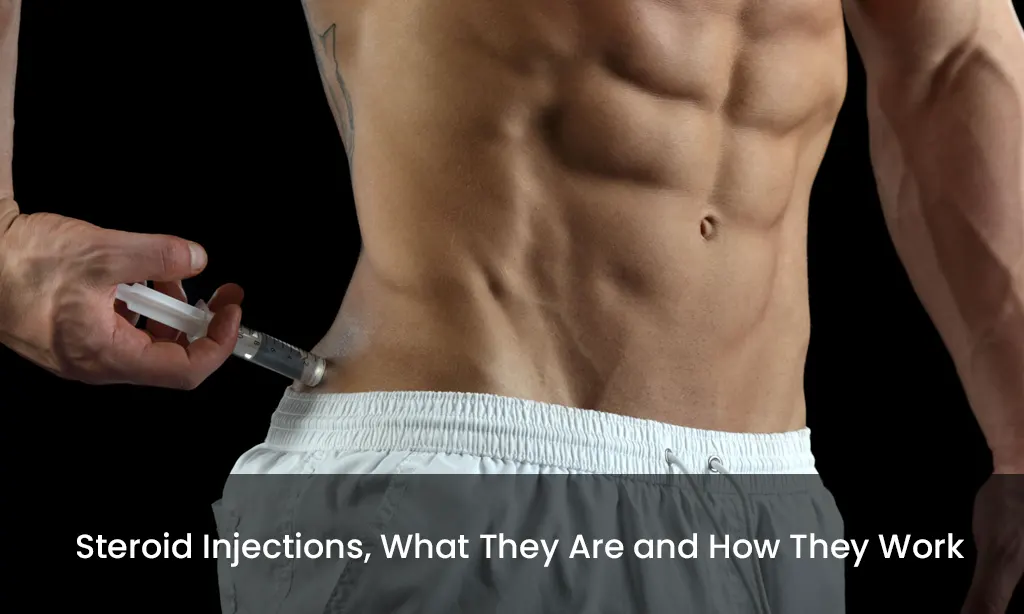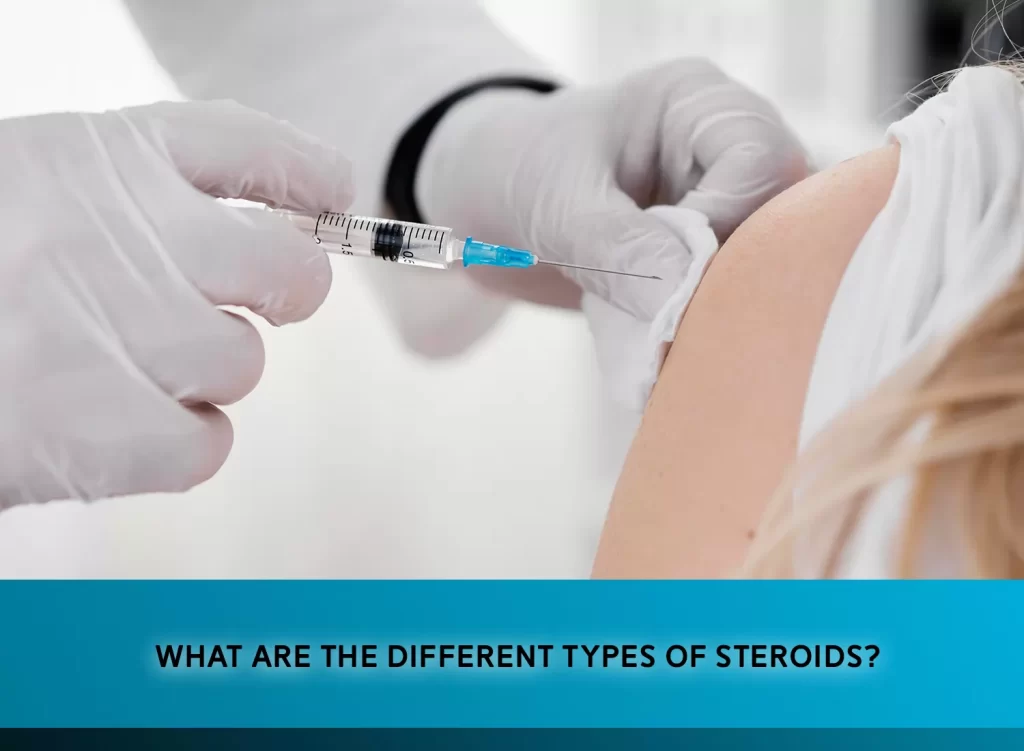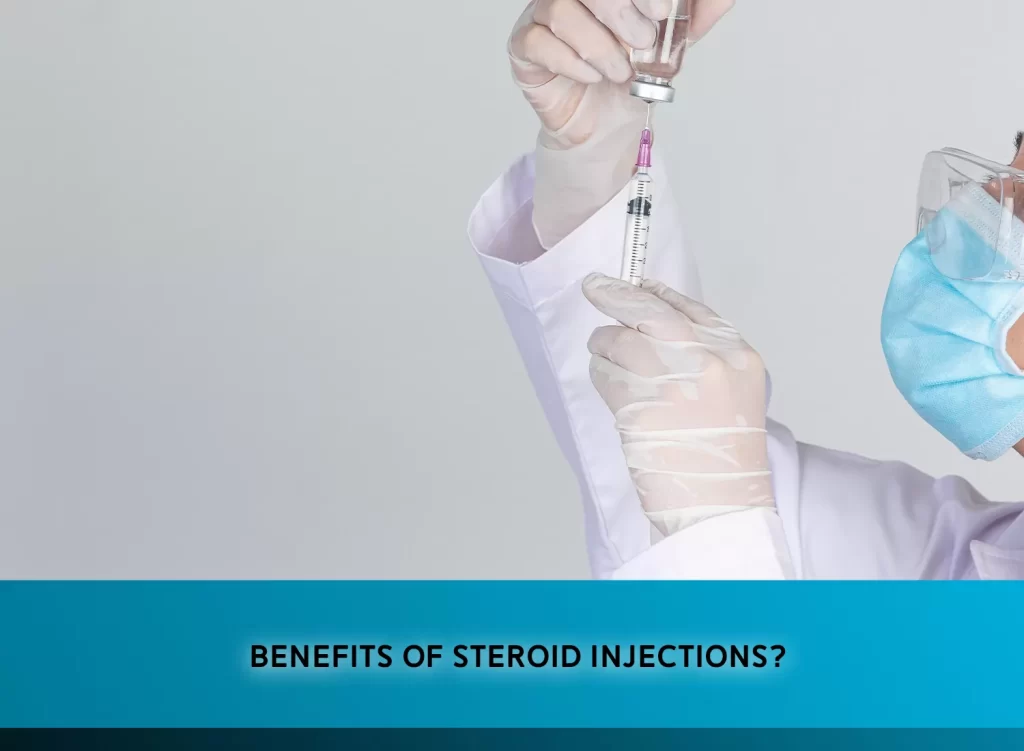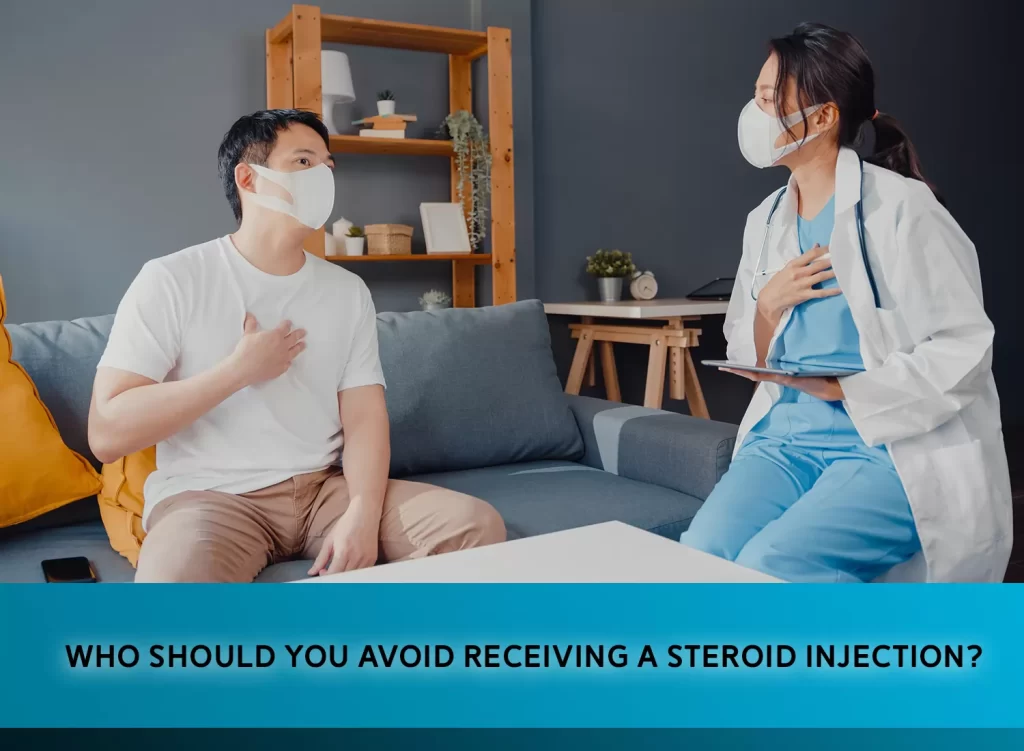Table of Contents
Some joint and muscle conditions can cause inflammation that can be reduced by steroids (cortisone shots). Although there are numerous ways to administer steroids, a steroid injection is often the best option.
With the help of this article, you’ll learn more about how steroid injections work, what conditions they treat, and how they’re administered.
How Are Steroids Administered?
Steroid drugs are available in a variety of forms, each of which differs in terms of how easily they dissolve and how long they remain in your system.
Your doctor may decide to administer steroids throughout your entire body (referred to as systemically) or only in an affected area (referred to as localized) (called locally).
The way in which a steroid shot is administered depends on the type of steroid and the purpose of the injection. For example, if you have an infection, your doctor may decide to inject a steroid into a specific muscle or into the bloodstream. If you have arthritis, your doctor may decide to inject a steroid into the joint itself.
What Are the Different Types of Steroids?
There are two main types of steroids: corticosteroids and anabolic steroids. Corticosteroids are the most common type of steroid. They include cortisone, hydrocortisone, and methylprednisolone. Corticosteroids are often used to treat conditions that involve inflammation, such as joint pain, asthma, arthritis, and psoriasis. They work by binding to receptors on cells in the body, which causes them to become inactive. These receptors are present on almost every cell in the body, so they can have a wide range of effects.
The best known of the receptors that corticosteroids bind to is the glucocorticoid receptor. The glucocorticoid receptor is found in most cells in the body, and it plays a role in regulating many aspects of your metabolism. The glucocorticoid receptor also plays a role in controlling the immune system.
Anabolic steroids, on the other hand, are steroids that are not cortisol, but are structurally similar to testosterone. Moreover, they bind to the same receptors as testosterone. This means that anabolic steroids can have the same effects as testosterone.
Although anabolic steroids are structurally similar to testosterone, they are not produced in the body. Instead, they are artificially synthesized and injected into the body.
The most well-known of the anabolic steroids is testosterone. Testosterone is the primary male sex hormone. It is also the primary steroid hormone in males. It is responsible for promoting male characteristics, such as hair growth, increased muscle mass, and increased sex drive. It also plays a role in bone formation and maintenance.
Testosterone is produced by the adrenal glands. It is also produced in smaller amounts by the testes, the ovaries, and the brain. Testosterone levels in the body can vary greatly, depending on a number of factors, including the time of day, your diet, and the amount of physical activity you have been doing.
What Conditions Are Treated With Steroid Injections?
Steroid injections are used to treat a wide range of conditions. In most cases, your doctor will decide which type of steroid to use and how much of it to inject.
For example, if you have a condition that involves inflammation, such as arthritis, your doctor may inject a corticosteroid into the affected area.
A high dose of medication can be delivered directly to the inflamed area when your doctor administers steroids. There is no guarantee that the medication will reach the area of the body where it is needed, even if it is given orally or intravenously.
However, while steroid injections are one of the most effective ways to alleviate pain, they are not a permanent solution to the problem.
How Long Do Steroid Injections Last?
The amount of pain relief of a steroid shot varies from person to person. It usually begins to work within 24 to 48 hours of being administered. The effect can last for several weeks or even longer in some cases.
The injections are usually done on a weekly basis but they can be repeated more often if needed. Depending on the patient and their condition, the injections last anywhere from a few weeks to a year or more. It’s important to keep in mind that the longer you inject steroids, the longer you need to take them.
Benefits of Steroid Injections?
Steroid injections are medications that stimulate an area of the body to heal itself. They can be helpful to treat inflammation and swelling. They may also be used to slow down the progression of disease or improve the function of an organ. Steroid injections are commonly used to treat things like joint pain, arthritis, and other conditions that affect the muscles, tendons, or ligaments of the body.
The main purpose of using steroid injections is for pain relief and/or the temporary improvement of inflammation. This is why steroid injections are commonly used in patients with osteoarthritis. Steroid injections usually last a month or two. Once injected into the joint space, they act as an immunosuppressant and are effective at reducing the swelling and discomfort caused by arthritis. Steroid injections also increase mobility and flexibility in the area.
It’s no secret that people with arthritis and related conditions are prone to joint deformities and cartilage damage. Steroid injections may reduce swelling, relieve pain, and improve mobility. They may also be able to slow the progression of osteoarthritis and improve bone density.
Steroid Shot Side Effects
Steroid Injections may, on occasion, cause side effects such as:
- Infection
- Allergic reactions
- Bleeding
- Changes in skin color
- Fatigue
- Mood swings
If you receive a large number of steroid shots in the same area, your bone, ligaments, and tendons may become weakened.
Negative effects will not be felt by everyone. The longer you wait between injections, the less likely you’ll be to develop them in the future if you do so.
Local steroid injections have a lower risk of serious side effects than other forms of steroid medication. In addition, they’re more affordable.
In many cases, steroid injections can reduce inflammation in a joint, allowing it to function more effectively. They may prevent you from needing to use oral steroids or higher doses of oral steroids, which may result in more severe side effects in some cases.
Is It Safe To Take Different Steroid Shots Together?
It can be a good idea to ask your doctor if you’re considering combining two or more steroid injections. You may experience some unwanted side effects from taking them together if either one was not intended for you. And if you had any reactions to the first medication, don’t use it again until your body has recovered.
As long as you are using a prescribed steroid medication that is FDA-approved for treating a specific condition or injury, there should be no problem combining it with a topical product. For example, if you are using a prescription topical steroid cream that contains hydrocortisone, it does not make sense to use a topical glucocorticoid gel that contains triamcinolone. This is because these two medications would be contraindicated against each other because the side effects would outweigh the benefits.
Who Should You Avoid Receiving a Steroid Injection?
Your doctor will not administer steroids to treat an infection if the inflamed area or another part of your body is infected. If a joint has been severely damaged, injections are unlikely to be effective.
A bleeding disorder or an anticoagulant medication may make steroid injections more likely to cause bleeding (also known as blood thinners). Your doctor will use extreme caution when making a recommendation about them. As the number of steroid injections per year rises, so does the risk of weakened tissues such as cartilage or bone developing in the treated area.
Do steroid injections play a role in a patient’s overall treatment? Your doctor may also prescribe pain medication, anti-inflammatory drugs, physical and occupational therapy, and assistive devices like canes and braces if steroid injections are necessary.
A local steroid injection, for example, may be sufficient treatment for tendonitis in some people if they don’t have any other health issues. As with any other treatment, injections are only one part of the equation when it comes to treating conditions like rheumatoid arthritis.
The Bottomline
Many autoimmune and joint conditions benefit greatly from the use of steroid injections as a treatment option. It is possible to administer steroids by injecting them into the muscles, tendons, joints, or even the bursae. Additionally, they can be administered intravenously to treat autoimmune flares.
They can help alleviate symptoms for several months at a time when combined with other treatments, such as physical therapy. A maximum of three or four steroid injections per year is recommended.
If you have a bad headache or an infection at the injection site following a steroid injection, contact your doctor immediately.





